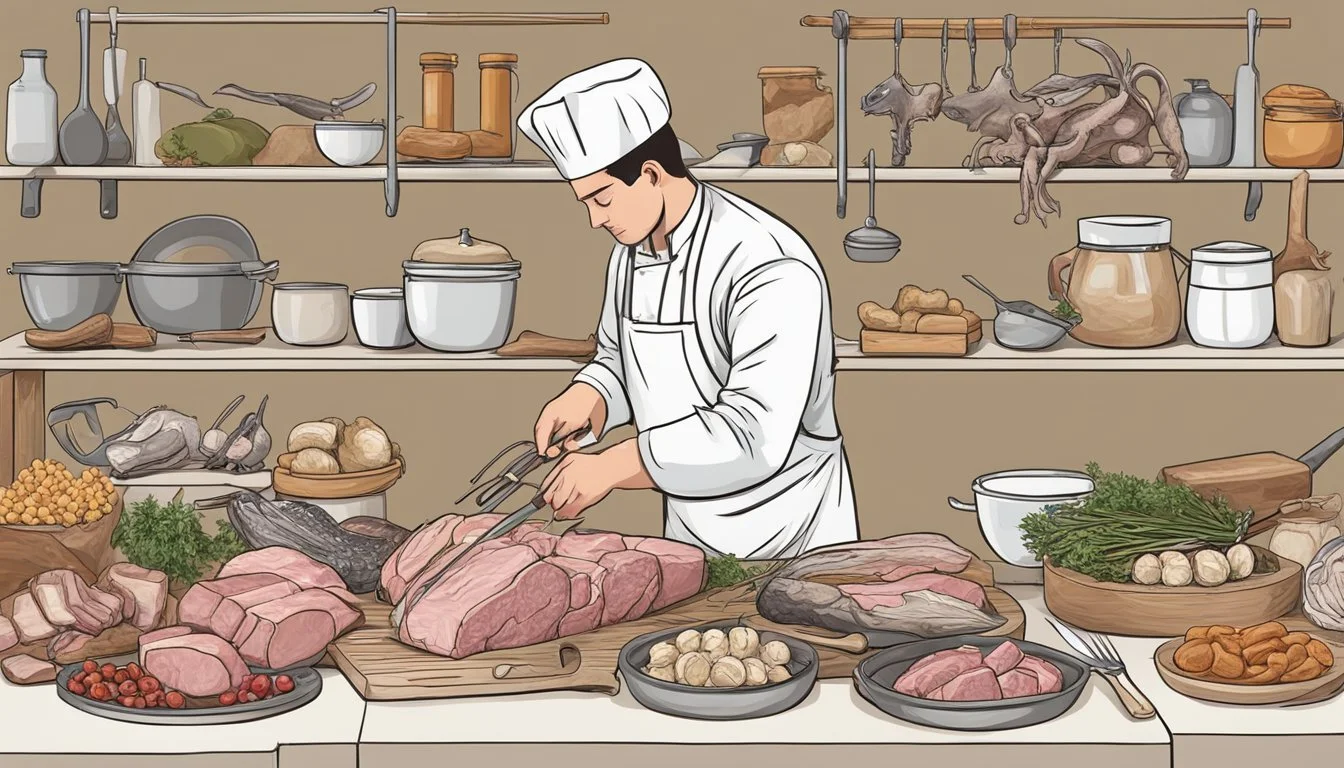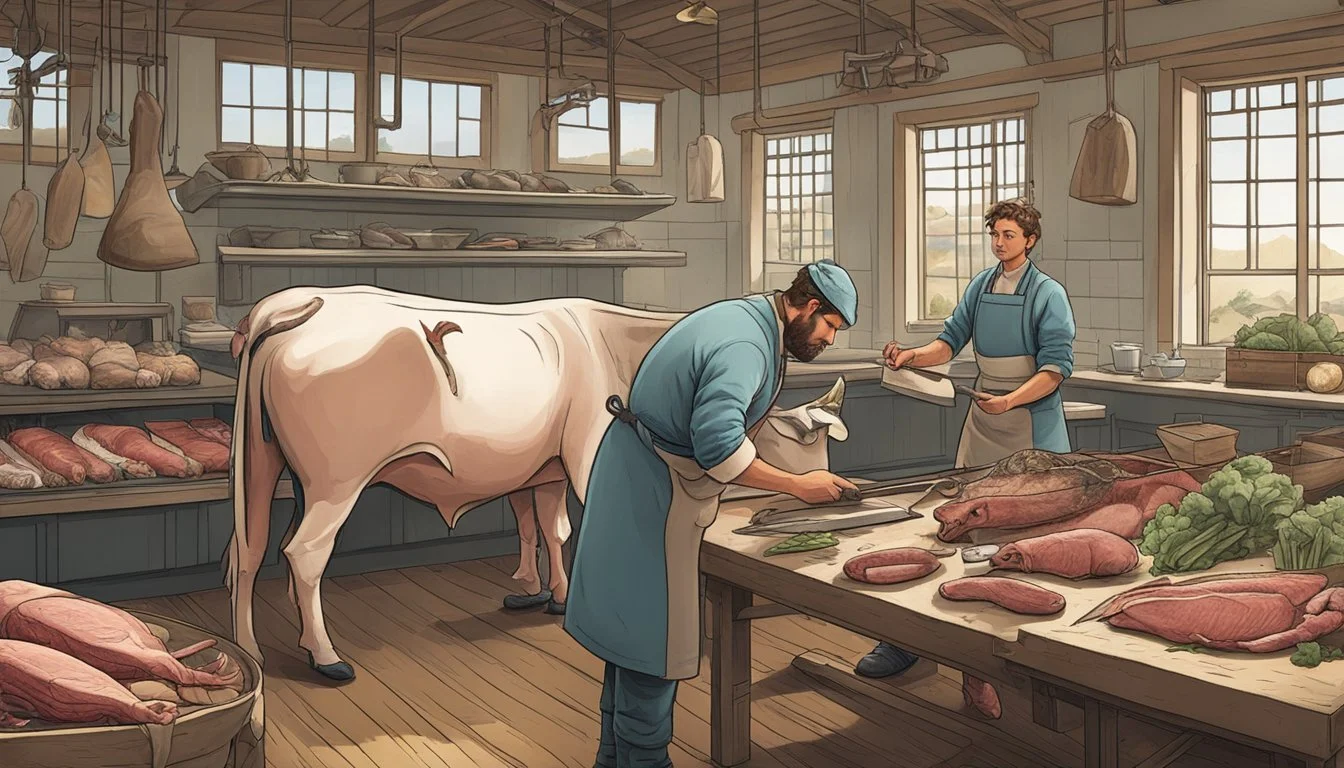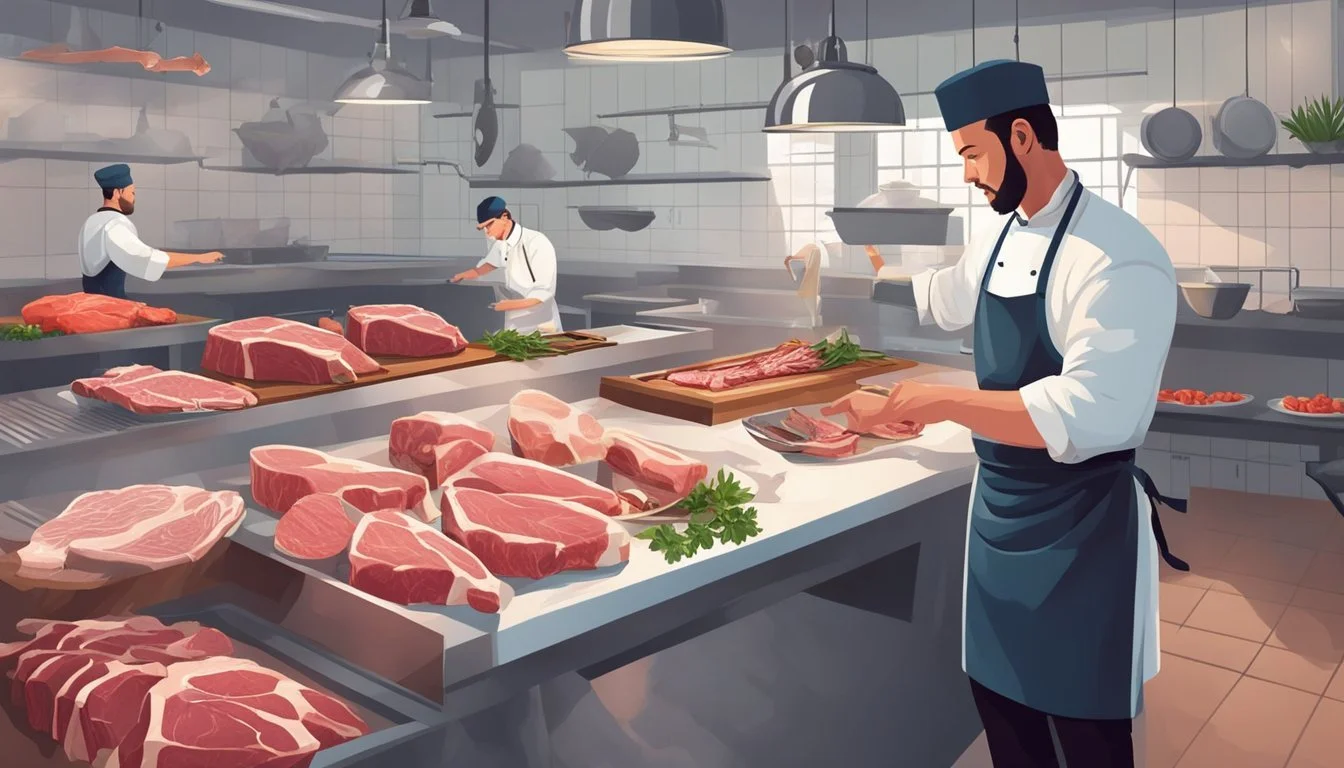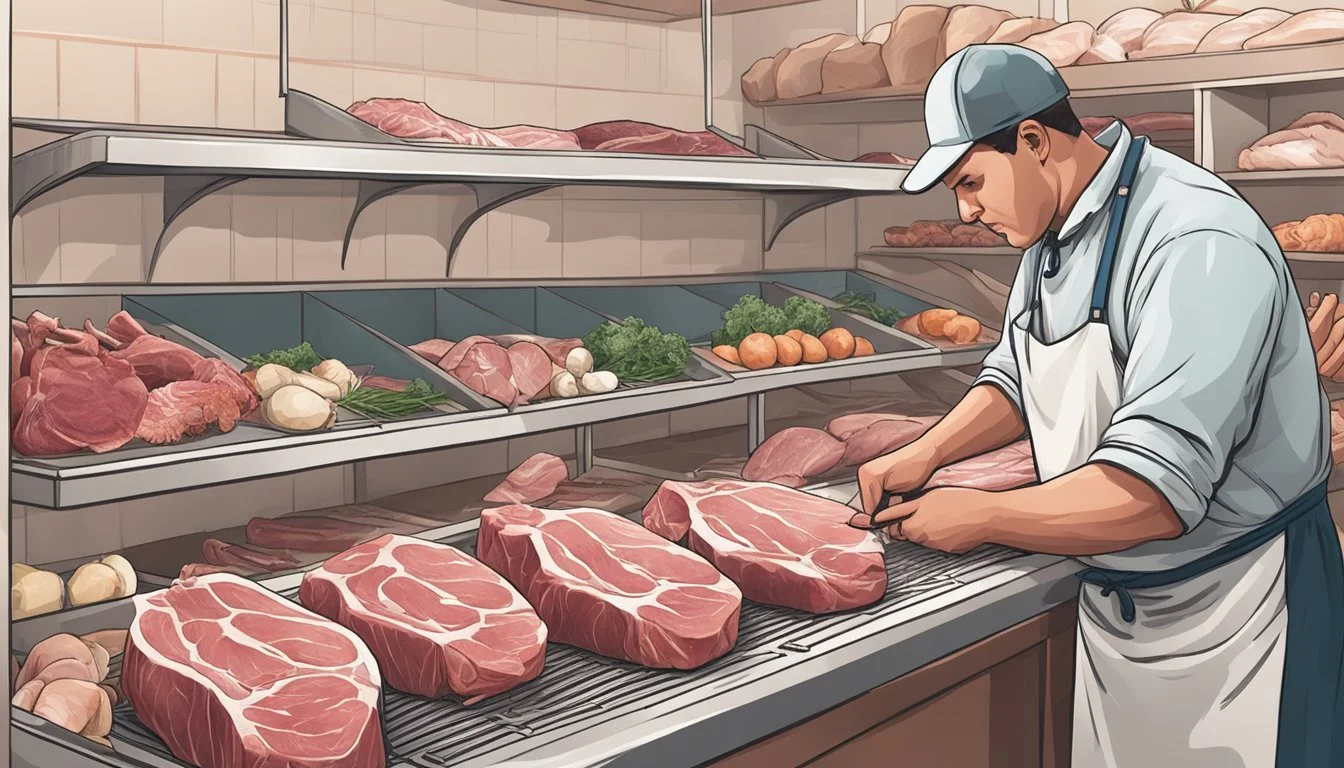Nose-to-Tail Eating
Embracing Sustainability by Utilizing the Entire Animal
Nose-to-tail eating is a culinary approach that embraces the consumption of the entire animal, from nose to tail. This practice is not new, having deep historical roots, but it has gained renewed attention as a sustainable method of meat consumption. By utilizing the whole animal, chefs and consumers alike are able to minimize waste and respect the life of the animal, making the most of its meat, organs, and bones. This approach aligns with a broader environmental sustainability ethos, recognizing that responsible use of animal products can contribute to more sustainable food systems.
The focus on utilizing every part of the animal brings with it an array of traditional and innovative dishes that might include lesser-known cuts of meat and offal. The sustainability aspect of nose-to-tail eating is multifaceted: it includes the economic efficiency of using the entire carcass, the ethical appreciation of the animal by not letting any part go to waste, and the environmental consideration of decreasing the ecological footprint associated with animal farming and processing.
This practice often results in the exploration of new textures and flavors, challenging both chefs and diners to expand their culinary experiences. While nose-to-tail dining is popular in some restaurants, the principles can also be applied in home cooking, where consumers have the chance to make conscientious choices about their meat consumption. Through nose-to-tail eating, there's an undeniable opportunity to progress toward a more sustainable future, firmly integrating respect for animal products with a commitment to environmental sustainability.
Historical Context and Revival
In exploring the history and resurgence of nose-to-tail eating, one finds a practice steeped in tradition, sustainability, and cultural significance. It presents an ethical choice that aligns with contemporary environmental concerns while honoring culinary heritage.
Past to Present: The Evolution of Eating Habits
Historically, nose-to-tail consumption was born out of necessity. It is a tradition where societies utilized every part of an animal, ensuring nothing was wasted. During times when food resources were scarce, this approach was especially vital. It allowed communities to make the most of their livestock, exemplifying a sustainable way of life long before sustainability entered popular discourse.
Following industrialization and the rise of supermarkets, this resourceful approach to eating waned in many regions. Abundance of choice led to selective eating habits, focusing on prime cuts and disregarding the rest.
However, recent decades have witnessed a revival. Driven by environmental concerns and a growing recognition of ethical eating, the nose-to-tail practice has re-emerged. This resurgence is also fueled by chefs and food enthusiasts who appreciate the flavors and culinary potential of less commonly used cuts.
Cultural Significance of Nose-to-Tail
Nose-to-tail eating holds cultural significance in various societies around the world. Many cuisines celebrate the use of the whole animal as part of their culinary traditions and view it as a sign of respect for the life taken.
For example, in many Asian and European cultures, dishes featuring offal—or organ meats—have been savored for centuries. The practice is also prominent in traditional cuisines across Africa and South America, where community feasts often involve cooking the entire animal.
In contemporary culinary circles, the approach has become an intentional, ethical choice. Chefs championing nose-to-tail tout the practice as a method to honor the animal and reduce waste. Fine dining establishments have taken the lead, incorporating everything from bone marrow to pig's ears into sophisticated dishes. Through these efforts, nose-to-tail is not just a nod to tradition but also a progressive step toward a more sustainable and respectful food culture.
Ethical and Environmental Considerations
Nose-to-tail eating is acclaimed for its potential to minimize waste and the environmental footprint of meat consumption by utilizing the entire animal.
Reducing Waste and Resource Use
Nose-to-tail dining embraces the use of offal, the parts of the animal that are often discarded, thus significantly reducing food waste. This practice demands less production overall because more of each animal is used. For example, by consuming less popular cuts, such as kidneys or oxtails, less meat must be raised separately for consumption. This is vital given that livestock production consumes substantial amounts of water and energy resources. Incorporating the full range of animal parts can also lead to a more varied diet and can help to sustain demand for these otherwise wasted parts.
Impact on Climate Change
The environmental impact of nose-to-tail eating includes its effect on climate change. The meat industry is a significant producer of greenhouse gases, with methane being a notable emission from cattle. By fully utilizing the animals raised for food, the practice can contribute to a decrease in the number of animals required, which in turn can lead to a reduction in these harmful emissions. Additionally, being more environmentally friendly, this approach promotes a sustainable food system that aligns with efforts to combat climate change by aiming for a more moderate carbon footprint associated with meat consumption.
Health and Nutrition
Nose-to-tail eating isn't just an approach to sustainability; it significantly impacts the nutritional intake of those who practice it. This section dives into the health aspects, examining the nutrients found in unconventional cuts and the overall effects on health.
Nutritional Value of Lesser-Known Cuts
When consumers opt for lesser-known cuts of meat, they expose themselves to a variety of nutrients not typically encountered in standard muscle cuts. Organ meats, for instance, are highly nutritious. Liver, for instance, is rich in vitamin A, B vitamins, iron, and trace minerals. Similarly, heart meat is an excellent source of coenzyme Q10 and B vitamins, notably B12, which is crucial for nerve health and blood formation.
Kidneys: High in protein and selenium, an antioxidant
Tripe (stomach lining): Good source of protein
Tongue: Contains fatty acids, iron, and zinc
The inclusion of bone marrow and connective tissues brings the benefit of collagen, which supports joint health and skin elasticity. These parts might not be the traditional choice but they are powerhouses for nutrition.
Balancing Meat Consumption with Health
While nose-to-tail eating brings forth diverse nutritional advantages, it's important to balance meat consumption with health. Dietitians emphasize that, while protein from meat is an excellent source of essential amino acids, moderation is key. Melding the use of whole animals with a diet that includes plenty of vegetables and fruits can create a balanced, health-promoting meal plan.
The consumption of off-cuts, which are often richer in minerals like zinc and iron than their muscle meat counterparts, can contribute to improved overall health, when included in a balanced diet. Yet consumers should be mindful of the quantities and frequency of red meat intake, due to its association with certain health conditions when consumed in excess.
Culinary Techniques and Innovations
As nose-to-tail eating gains prominence, chefs and home cooks alike are embracing innovative culinary techniques to honor this sustainable practice. Harnessing traditional methods and pioneering new recipes ensures that every part of the animal, from organs to bones, is utilized thoughtfully and deliciously.
Modern Nose-to-Tail Recipes
Modern nose-to-tail recipes often feature lesser-known cuts and organ meats, transforming them into gourmet delights. Beef cheeks and lamb tongue, previously overlooked, are now slow-cooked to perfection to enhance their rich flavors. Chicken liver pâté has become a staple in many kitchens, relished for its creamy texture and depth of taste. Home cooks are increasingly experimenting with recipes such as:
Beef Marrow Bones: Baked and seasoned to create a luxurious appetizer.
Pork Cheek Ragu: Simmered in a hearty sauce and served over pasta.
These dishes not only present a profound flavor profile but also reflect a commitment to reducing waste.
Art of Butchery and Utilization of Organs
The resurgence of traditional butchery plays a crucial role in nose-to-tail cooking. Butchers skilled in this craft expertly dissect animals to ensure every part is used, including offal (internal organs and entrails). Organ meats like liver and kidneys are rich in nutrients but require precise cooking methods to be palatable.
Some techniques include:
Beef Liver: Preparation Technique - Soak in milk to remove bitterness, Cooking Method - Pan-searing
Pork Tongue: Preparation Technique - Brine for tenderness and flavor, Cooking Method - Boiling and grilling
Lamb Heart: Preparation Technique - Marinated to enhance taste, Cooking Method - Stuffed and roasted
By mastering these techniques, both chefs and home cooks can revel in the health benefits and culinary satisfaction provided by natural, ethical, and sustainable nose-to-tail eating.
Sourcing and Supporting Local
When adopting a nose-to-tail dining approach, the focus on sourcing animal products from local butchers and farmers is paramount. This practice not only supports the local economy but also ensures a more sustainable framework for food consumption.
The Importance of Local Butchers and Farmers
Local butchers and farmers are instrumental in the supply chain of whole animal products. They often have a deeper understanding of sustainable practices and can provide consumers with organic and pasture-raised options. Local sourcing means fewer transportation emissions and a fresher product. It's a holistic approach that supports the community and often leads to better animal welfare standards.
Local Butchers: Play a crucial role in processing whole animals and offering a variety of cuts that might not be found in commercial outlets.
Local Farmers: Typically adhere to more humane and environmentally friendly farming practices, offering products like bison (What wine goes well with bison?) tallow and cage-free duck (What wine goes well with duck?) fat.
Benefits of Pasture-Raised and Organic Animal Products
Pasture-raised and organic animal products have numerous benefits tied to sustainability and health. Animals raised in a pasture are allowed to graze freely, engaging in natural behaviors which often results in a lower need for antibiotics and growth hormones.
Pastured Bison: Known for being leaner and containing high levels of omega-3 fatty acids.
Organic Duck: Offers a source of cage-free duck fat, a healthier cooking medium favored by gourmet chefs.
The use of products like bison tallow from pasture-raised bison and cage-free duck fat reflects a sustainable approach to animal fats, utilizing by-products that would otherwise be wasted, and offering consumers a richer flavor profile. This model supports local ecosystems, encourages the humane treatment of animals, and provides a direct connection between consumers and their food sources.
Cultural and Societal Perspectives
The shift toward sustainable food practices like nose-to-tail eating intersects with various cultural norms and ethical considerations. Vegetarians and vegans often propose alternatives to meat consumption based on ethical and nutritional grounds, while traditional societies have long practiced whole animal utilization.
Vegetarian and Vegan Views on Whole Animal Use
Vegetarianism and veganism are dietary choices motivated by a range of factors including animal welfare, environmental concerns, and health considerations. Vegetarians do not consume meat, which means they are typically opposed to practices such as nose-to-tail eating, although some may acknowledge the reduced wastage it involves. Vegans take this further by not consuming any animal products, arguing for plant-based sources of nutrition and protein that do not involve animal use at all. They assert that ethical eating should avoid animal exploitation, focusing on sustainability through entirely plant-based agriculture.
Nose-to-Tail Eating in a Global Context
Nose-to-tail eating is not a novelty but has roots in traditions around the world where wasting food has long been taboo. Many cultures emphasize the importance of respecting the animal by using all its parts. This approach is seen as both an ethical obligation and a culinary challenge. The Food and Agriculture Organization advocates for sustainable food systems, and nose-to-tail fits within this framework by fully utilizing animals and reducing waste. Globally, opinions on meat consumption and sustainability vary widely, but nose-to-tail eating offers a perspective that aligns meat consumption with a more sustainable, ethical approach to food production.
The Future of Nose-to-Tail Eating
The concept of nose-to-tail eating remains pivotal in the pursuit of sustainability in the culinary world, addressing pivotal elements of environmental impact and ethical food consumption. It envisions a future where meat is consumed with respect to tradition and sustainability, while efficiently utilizing every part of the animal in diverse cooking styles.
Advancements in Sustainable Agriculture
Sustainable agriculture is evolving to incorporate nose-to-tail practices with a focus on biodynamic and organic methods. Farmers and producers are increasingly adopting ethical standards, ensuring the entire food chain benefits from humane animal rearing and slaughter. Techniques such as ** rotational grazing** and integrated crop-livestock systems contribute to a closed-loop system, where waste is minimized and the ecological footprint of meat production is reduced.
The proliferation of nose-to-tail eating encourages the use of lesser-known cuts of meat, which often require innovative cooking methods. This trend complements the broader movement toward sustainable food, targeting a reduction in the environmental impact of livestock farming, which is significant in the context of climate change.
Promoting Nose-to-Tail in Modern Diets
To incorporate nose-to-tail eating into modern diets, both awareness and education are key. Chefs and food influencers play a substantial role, showcasing how traditionally less desirable parts of animals can be transformed into epic culinary experiences. They are redefining the style and substance of what makes a dish not just palatable but desirable, tying in the tradition of whole animal utilization with contemporary tastes.
Campaigns and educational programs aim to shift consumer habits toward more sustainable, humane, and ethically sourced food options. By doing so, they reinforce the role of nose-to-tail eating as an approach that addresses concerns about environmental sustainability. As a result, expect to see an increase in the availability of nose-to-tail options in both restaurants and grocery stores, highlighting the connection between ethical consumption and sustainable food chain management.
Conclusion
Nose-to-tail eating represents a harmonization of culinary tradition with modern sustainability. It is a practice rooted in the ethos of minimizing waste by utilizing the entire animal—offering benefits that align with the principles of environmental sustainability. By approaching meat consumption with a nose-to-tail philosophy, one exhibits respect for the animal and contributes to a more sustainable food system.
Adopting this practice can be seen not just as a nod to culinary heritage but also as a step towards reducing the environmental impact of food production. The entirety of an animal's parts—from muscle to organ—can be used in cooking, thereby honoring the life and investment that goes into raising livestock.
Critically, chefs and consumers embracing nose-to-tail help mitigate the resource-intensive nature of meat production. Resources like water and feed are utilized more effectively when more of the animal is consumed. The potential for reducing carbon emissions also comes into play, as fully utilizing animals can contribute to less demand for mass meat production, thus potentially lowering the overall carbon footprint.
In essence, nose-to-tail eating does more than just revive culinary craft; it is a step towards a more conscious and respectful utilization of food resources. As this practice continues to gain traction, it may become an integral component of the global movement for sustainable food consumption and production.







